Calico Cats are known as tri-colour cats due to the combination of white, black and orange in their coats.
Calico is not a breed but rather a colour variation which is common in a wide range of cat breeds.
Almost all (99%) calico cats are female!
Contents
Calico Cat Appearance
For a cat to be considered a Calico, she needs to have three unique colours. One of the colours is always white.
Typical Calicos have a combination of white, black, and orange, or white, black, and red.
Some cats have variations of the black and red element. For example, a cat can be a combination of grey, white, and orange, or white, black, and cream.

Any Calico whose pattern is composed of white, blue/grey, and cream is known as a ‘dilute Calico’.
Some Calico cats may have little to no white on their coat, in which case black and orange might seem their primary colours. Tortoiseshell cats are actually Calicos that have almost no white on their coat.
The difference between the two is that while torties have the two main tones (black and orange or black and red) interwoven, standard Calicos have distinct patches of each individual colour.
In terms of size, Calico cats can vary from 4 to 8 pounds to as much as 9 to 12 pounds.
Calico Genetics
The Calico pattern is strongly related to the X chromosome, and since females have two of them, almost 99% of all Calico cats are female.
All male Calicos have a chromosome-altering condition called Klinefelter’s syndrome.
This is why they are so rare. Moreover, they can develop other genetic modifications besides their colour pattern.
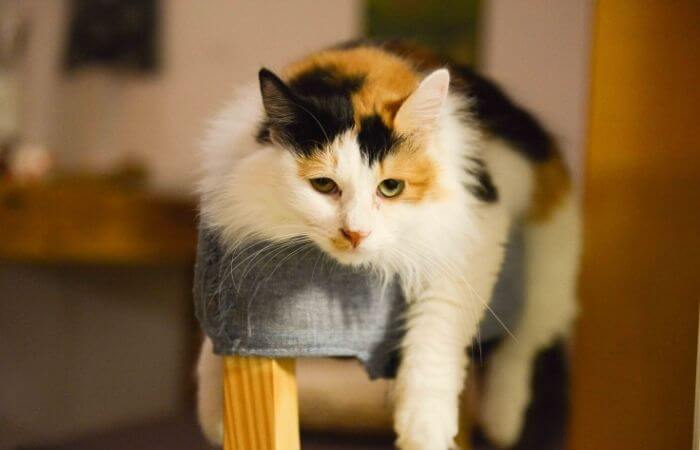
Since males have two X chromosomes, they cannot breed (they’re sterile). They can have a range of reproductive problems from inflamed testicles to the absence of sperm cells.
In fact, male Calicos are mistaken for females by other cats.
Calico cats can cost anywhere from £300-£2000 but due to their rarity male calico cats may sometimes cost in excess of £2000!
Behavioural Traits of Calico Cats
All cats, whether they are Calico or not, have unique personalities.
Their behaviour largely depends on their life experiences.
Even taking this into account, there are some typical behavioural traits of Calico cats.
- Playful and energetic
- Feisty and fiery
- Warm-hearted and affectionate
- Very independent
- Sweet and loyal
It’s generally acknowledged that Calico cats tend to have a little more attitude compared to others.
Although they can be strong-willed, they can also sleep for many hours during the day and spend a lot of time in their owner’s lap.
Calico Cat Personality
The best word to describe a Calico would be unpredictability.
While convincing cats to do something you want is already hard enough, it can be downright impossible with a Calico cat.
As stubborn as they are, they will show you affection and come to you whenever they want.
They’re intelligent and talkative, but also very sociable.
While some people say that they get along well with other cats, the truth is that Calico females can be very territorial.
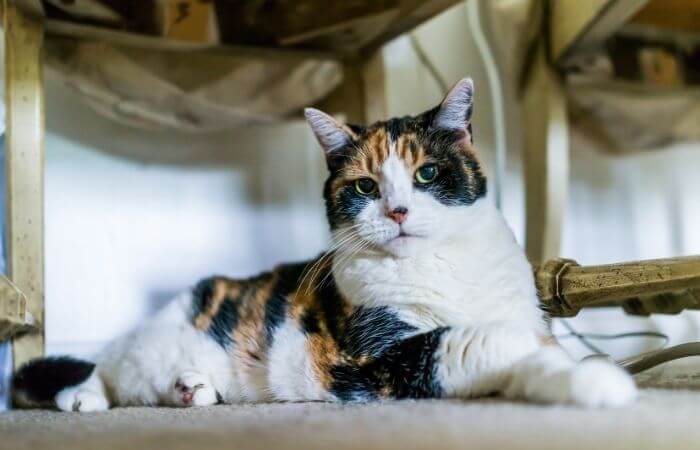
This means that having two females in the same living environment can lead to conflict.
Naturally, it also depends on whether the kittens grew up together, in which case they might have gotten used to each other.
Fortunately, Calicos get along perfectly fine with both dogs and children, but it, of course, depends on each animal.
Calico Kittens
Kittens have as much attitude as their adult counterparts, which is why it is important to socialise and try to train your feline friend as early as possible.
The best socialisation period is when the kitten is 2 to 7 weeks of age.
It’s often said that Calico cats thrive when they are left to go outside and interact with other cats or animals.
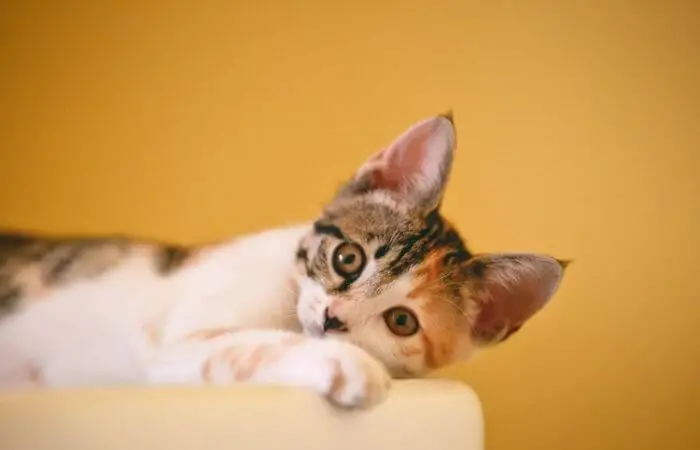
While this might be true due to their overly active personalities, it can also put them in danger.
If you don’t want your feline friend to get used to ‘going to the bathroom’ outside, you should teach your Calico kitten to use the litter box.
Litter training should be done as early as four weeks.
The training process doesn’t take a lot of time, and you might be surprised to see that the kitten starts using the box by herself.
You will have to introduce her to the litter and stir her paws into it around 30 to 40 minutes after a meal.
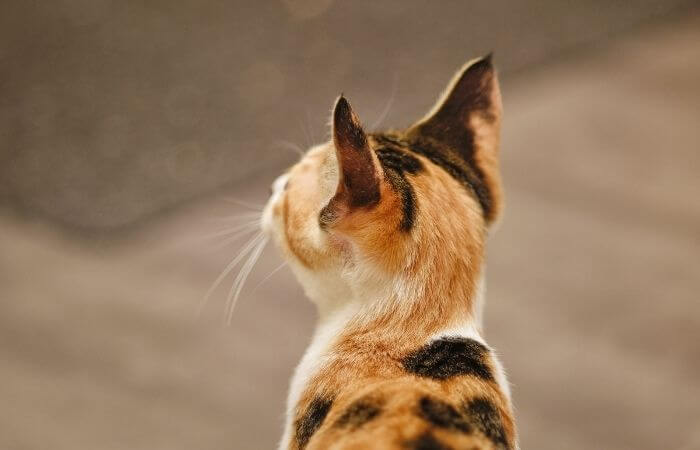
Most Calico kittens are quirky.
Some people even describe them as ‘neurotic’, but that’s only because they love their playtime and they never seem to run out of energy.
A common problem of all kittens, including Calicos, is biting.
Use toys whenever you see that the little one tries to bite your hand in an attempt to play.
Eventually, they will learn that biting the toy is fine, but not your hand, especially if you use verbal reinforcement such as saying ‘no’ each time she tries to claw at your hand or give it a bite.
Feeding Your Calico Cat
The diet of a Calico shouldn’t be any different to that of any other cat.
This means that it should be composed primarily of protein.
If you intend to use commercial cat food, it’s a good idea to opt for one that contains no animal by-products, preservatives, additives, or artificial colours.
All of these can have a negative impact on your feline friend’s health in the long run.
If your cat tends to suffer from constipation, which can happen especially with geriatric Calicos, you can use pumpkin to add a bit of fibre into her diet.
You can feed your Calico a mix of wet and dry food, but we’d like to note that kibble is less recommended.
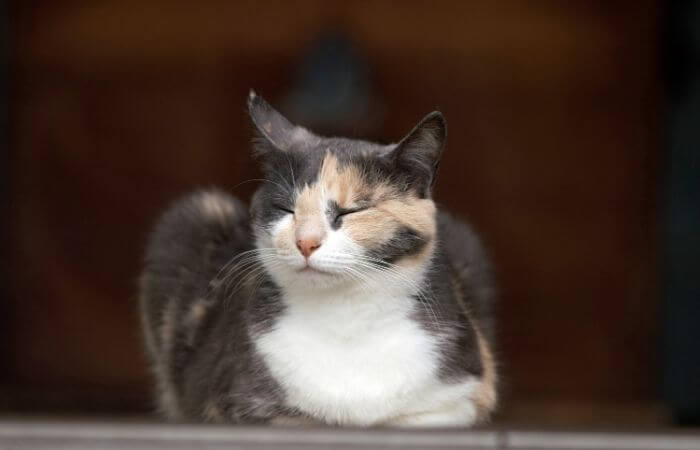
Most cats don’t tend to drink a lot of water, which can eventually make them prone to developing urinary pathologies.
For this reason, it’s better to feed your Calico wet food and only resort to kibble when you know you’re going to be out of the house for several hours.
On the other hand, kibble does offer the advantage of reducing the risk of your Calico developing dental problems.
This is because the dry bits indirectly clean the bacterial plaque present on your cat’s teeth.
You also have the option of feeding your Calico homemade cat food.
There are plenty of online tutorials nowadays that can tell you how much minced meat, fat, and vitamins you are supposed to mix together to create the perfect Calico diet.
If you choose to go down this road, make sure that you store the food correctly so that it is never at the risk of being contaminated by germs.
Most pet owners freeze and thaw it right before feeding it to their cat.
Health
Fortunately, Calico cats aren’t predisposed to any particular health problems.
Non-purebred cats are usually healthier than their purebred counterparts.
Since Calico is not a breed, you do not have anything to worry about in terms of specific medical conditions.
However, that doesn’t mean that your Calico cat doesn’t risk developing health issues as they grows older.
Geriatric cats can suffer from chronic illness such as kidney or liver failure, hyperthyroidism, and heart conditions.
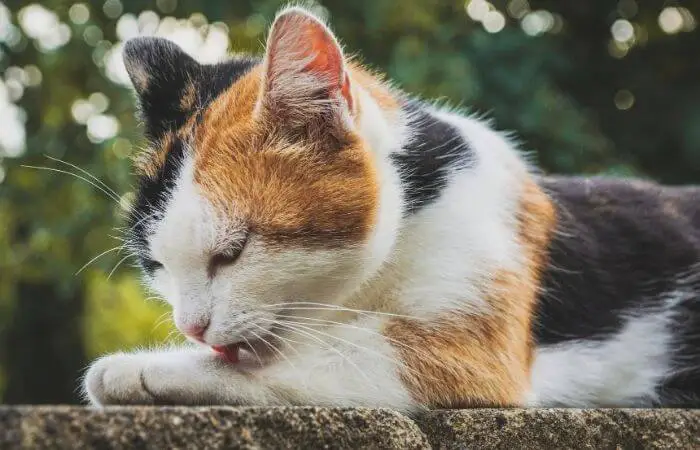
You should take your Calico to the vet at least once or twice a year, even if they are completely healthy.
Some tests, such as a complete blood count or blood chemistry, can reveal underlying health problems that can become more and more severe as time goes by.
As you know, cats aren’t that great when it comes to showing signs of illness, so it’s undoubtedly better to prevent rather than cure a disease.
Finally, all cats have to be dewormed at least once a year.
This is even more important in Calicos that spend most of their time outdoors as they can pick up both internal and external parasites from mice and other cats they come in contact with.
Depending on your veterinarian’s vaccination plan, Calicos have to be given shots at least every two years.
For preventing flea and tick infestations, you can get commercially available flea treatments such as Frontline, Revolution, or Advantage.
Is Calico a Breed?
The short answer to this question is no.
Calico only refers to the cat’s pattern, meaning that there should always be three easily distinguishable colours on the animal’s coat in order for her to be a Calico.
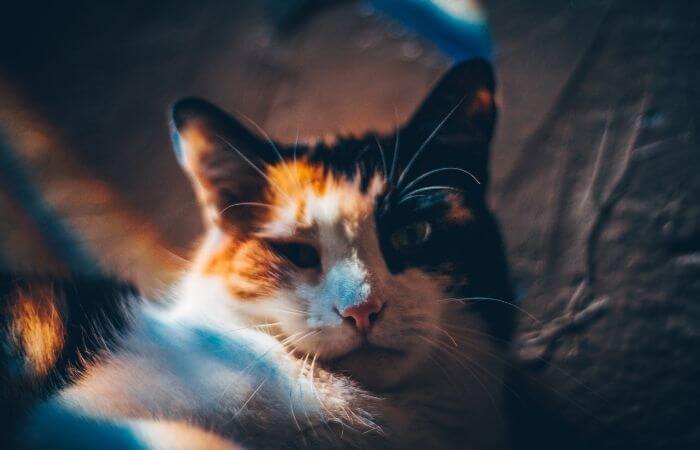
This is why any breed can be a Calico.
The Calico colours are commonly found in the following breeds:
- American Shorthair
- Japanese Bobtail
- Persian
- Devon Rex
- Cornish Rex
- Munchkin
- British Shorthair
- Sphynx
- Scottish Fold
- Turkish Van
Why are they called Calico?
The word Calico has a long and somewhat confusing history. The word’s origin can be traced back to the 16th century as a version of a port located in India — Calicut.
The word was used by the British to describe a type of material manufactured in that place.
The fabric was mostly white but had a colourful pattern composed of black and orange-red.
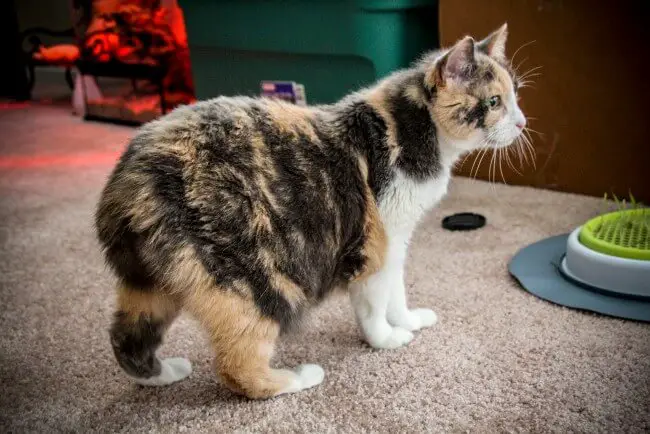
It didn’t take long for people to create a shortened version of the word Calicut in the form of ‘Kalko’, which eventually turned into ‘Calico’.
Initially, the colour pattern was used to describe other animals, such as horses. Historically, Calico cats ended up being called by the name sometime toward the end of the 19th century.
Therefore, the name comes from a fabric pattern initially manufactured in India.
Calico Cat Names
If you have adopted a Calico kitten and you’re unsure about what name might make the best choice, here are some popular options:
- Amber
- Coral
- Copper
- Heathcliff
- Marigold
- Oliver
- Penny
- Picasso
- Rainbow
- Tiger
- Simba
- Rusty
- Callie
- Pumpkin
Facts About Calico Cats:
1. In many countries, Calico cats are considered a sign of good luck. They are believed to bring good fortune to families across the world.
2. Calicos are an official symbol of fortune in Japan ever since the 19th century.
3. In the United States, they were often referred to as ‘money cats’ as it was believed that they would fetch top dollar when being sold.
4. Calico cats became the symbol of the Maryland state in 2001.
5. Since Calico males are sterile, you cannot breed a Calico cat with another. The gene is passed on to the next generations only by the mothers.
6. Most Calico cats have a life span of 12 to 16 years.
7. Male Calicos are very rare. A study performed by the University of Missouri’s College of Veterinary Medicine indicated that only one in 3,000 individuals is male.
8. The Irish used to believe that rubbing against a Calico’s tail can cure warts.
9. A type of crab was named ‘Calico’ after the coat pattern of cats. The species lives in the Atlantic Ocean and can be seen at the Chesapeake Bay.
Summary
Calico cats are a little eccentric compared to others, but they’re loyal, loving, and very fun to be around.
Calicos make fantastic pets for people who are already dog parents or for families with children.
Don’t be wary of adopting Calico kittens just because they seem to have more energy than others. A Calico can easily become one of your best friends and brighten all of your days.
Also Read: Chausie Cat: Breed Guide
As an Amazon Associate I may earn a small fee from qualifying purchases at no extra cost to you. This helps us run the site, so thanks for your support!

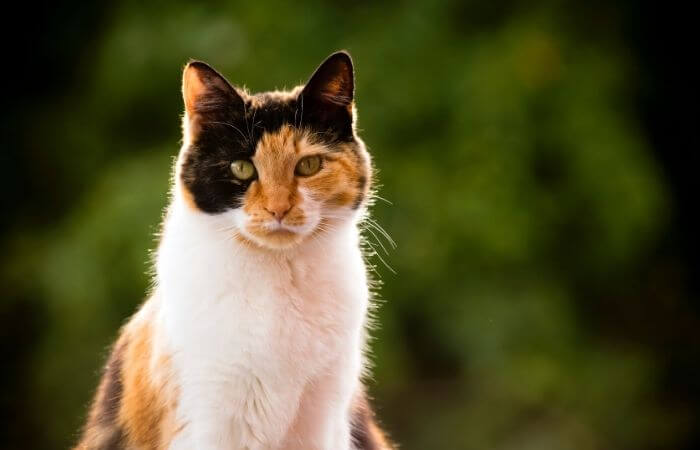
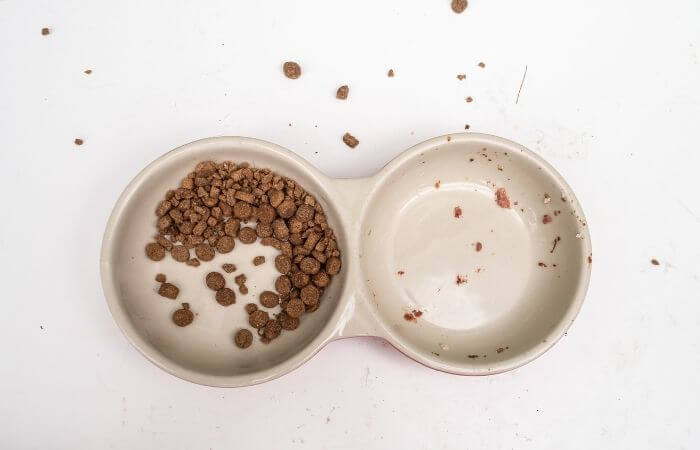
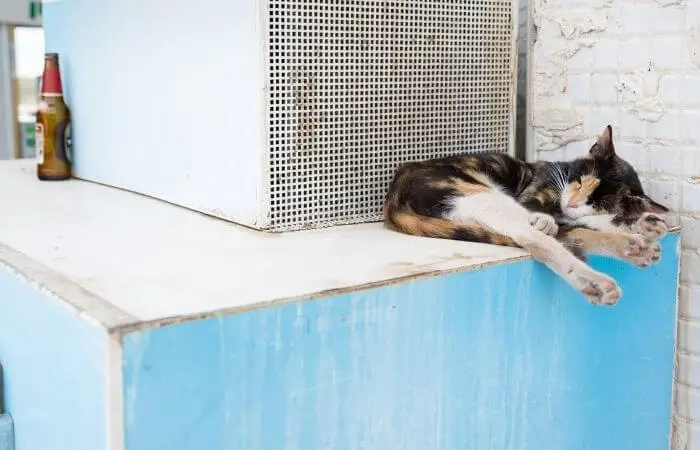
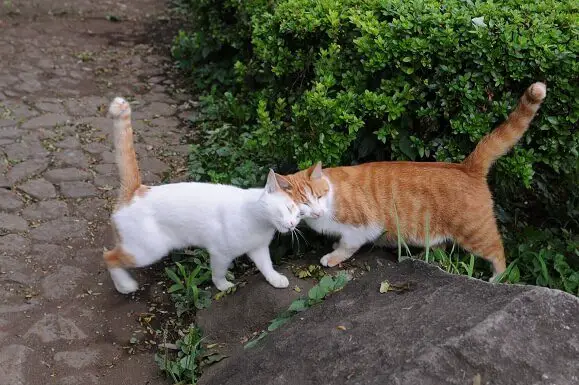
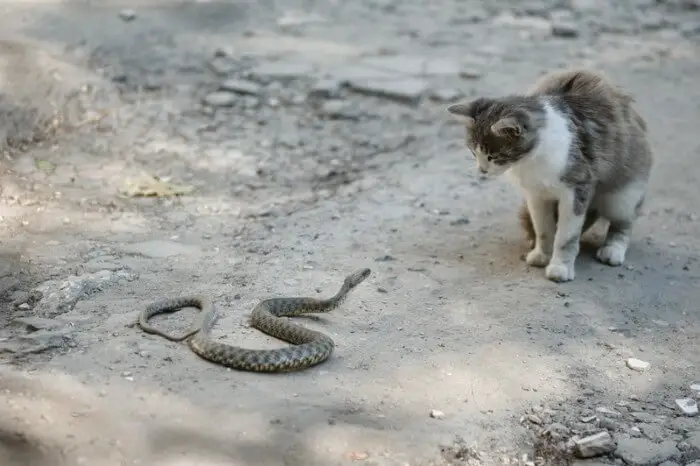
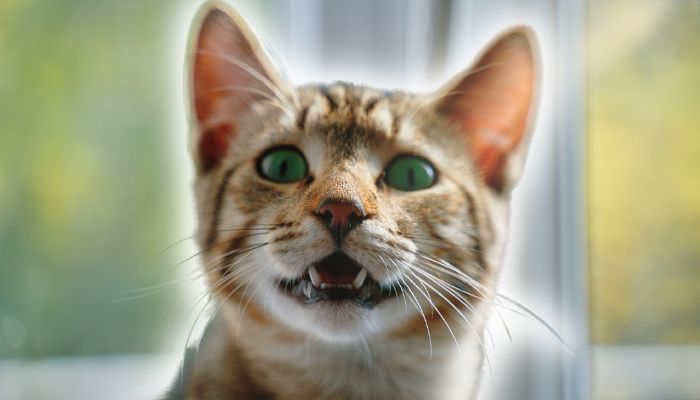

Leave a Comment